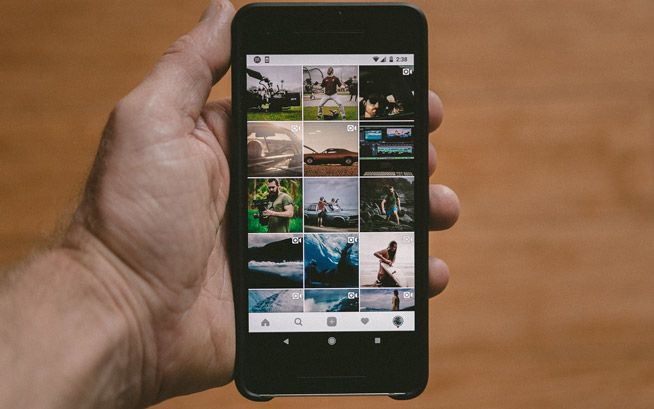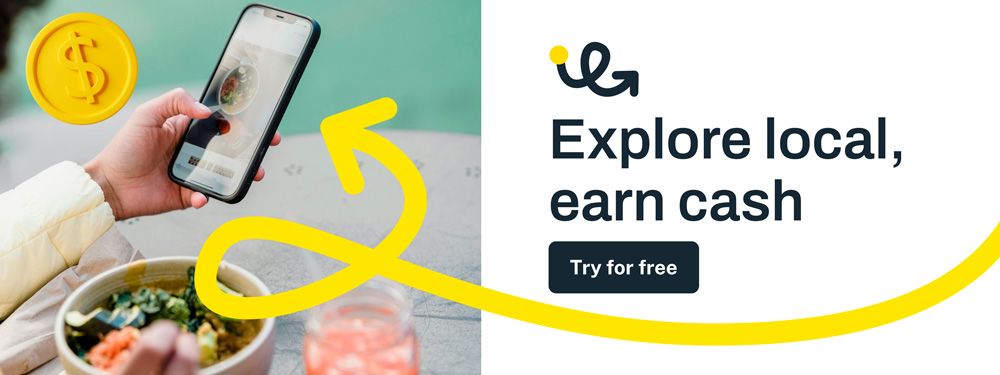4 Types of Social Media Influencers To Grow Your Brand
Discover a variety types of influencer on social media from nano to macro. Explore how to scale your marketing activities with influencer marketing.
Nancy J. Hassler
One key element of transformation is the rise of social media influencers, individuals who wield significant influence over their followers and can help brands reach a wider and more engaged audience. For every dollar invested in influencer marketing, brands can expect a remarkable return of up to $5.78.
80% of consumers have purchased based on influencer endorsements, with approximately three in four consumers willing to invest up to $629 in products inspired by influencers.
As more companies incorporate content personalization into their digital marketing arsenal, competition for the audience's attention will intensify. For businesses and brands, influencer marketing represents an exceptional opportunity to boost website traffic, amplify brand recognition, and, most importantly, maximize ROI.
Different types of social media influencers can reach distinct audiences and achieve various goals. Depending on your business's nature, the level or type of influencer that best suits your partnership may vary.
Get ready to explore the influencer landscape, from mega to macro influencers, micro to nano-specific experts.
What Is an Influencer?
Social media influencer is an individual who utilizes various social media platforms to draw a specific audience towards a particular industry or brand they genuinely endorse and understand. These influencers hold the power to sway the buying habits of their followers by consistently sharing insights within their areas of expertise. They achieve this influence through their expertise, authenticity, and engaging content, which resonates with and captivates their dedicated fan base.
Digital influencer can be found across various social media platforms, such as Instagram, YouTube, TikTok, and Twitter, as well as in other digital spaces like blogs and podcasts. What sets influencers apart is their power to inspire, educate, and entertain, ultimately shaping trends, preferences, and consumer choices.
Collaborations with influencers extend beyond mere promotion; they encompass
- brand awareness building,
- product launches,
- addressing queries from potential customers,
- content generation, discounts, and
- driving sales.
The importance of social media influencers lies in the fact that people tend to trust messages from real individuals more than those from brand channels.
Influence extends beyond mere follower numbers; it encompasses engagement rates, niche relevance, and identifying influencers with authentic followings.

What Are the 4 Types of Influencers?
Influencers can be categorized in various ways, such as their niche or interest, content types (like video, images, or podcasts), the social platforms they favor, their personality, and even their content style. However, the most prevalent classification method relies on their follower count, giving rise to terms like micro, macro, and mega influencers.
Nevertheless, it's important to acknowledge certain limitations when categorizing social media bloggers based solely on follower count. The number of followers doesn't guarantee success because more than audience size is needed to reveal an individual's true influence. A person with 5,000 highly engaged followers could wield considerably more influence than someone with 50,000 who exhibit low engagement.
Let's dive into the influencer diversity and discover the various types that can power your brand's marketing strategy.
Mega Influencers
Mega Influencers, typically boasting 500K or more followers, are regarded as celebrities in their niche. They often juggle multiple collaborations, resulting in higher per-post costs. When partnering with them, contractual agreements are crucial, addressing legal aspects that may arise. Mega influencers are often well-known public figures or celebrities.
Their follower base spans continents, demographics, and interests. These famous social media influencers use captivating storytelling, often drawing upon their unique personalities and experiences to engage and enthrall their followers.
Advantages of working with Mega Influencers
- Mega Influencers are professional, delivering high-quality content. However, it's essential to align your brand standards with theirs, as they may prioritize their brand image.
- With a colossal audience, partnering with a Mega Influencer guarantees your marketing goals will reach millions.
- Mega Influencers meticulously curate their social media profiles. If your brand features prominently, it carries a prestige that's hard to match.

Macro Influencers
Macro influencers are typically characterized by their follower count, which falls within the range of 100,000 to 500k. These influencers often include social media celebrities who have garnered their following over time or achieved overnight fame.
These influencers strike an enticing balance between the expansive reach of celebrity influencers and the intimate engagement of micro-influencers. Their substantial influence presents an attractive option when you aim to connect with a broader audience while preserving an authentic and credible image.
While macro influencers come with a price tag, they tend to offer a better return on investment (ROI) than celebrities. Additionally, collaborating with them helps build brand recognition, making them a valuable asset for brands seeking to maximize their reach and engagement.
Advantages of working with Macro Influencers:
- They possess a broader reach, engaging with a diverse audience across various demographics.
- Macro influencers have well-established expertise and authority within their niche or area of interest.
- They offer a valuable balance between engagement rates and reach, making them versatile for influencer marketing campaigns.
- Macro influencers are a suitable choice when seeking broader brand exposure and expanding the reach to target a wider audience.
Micro Influencers
Micro-influencers fall within the follower range of 10,000 to 100,000 individuals. These influencers have established themselves as experts in specific areas of interest, earning the trust of their dedicated audience. At this types of influencers level, influencers maintain relatability and authenticity, often supported by a reasonable engagement rate and a niche-focused audience.
Advantages of working with Micro Influencers:
- They boast an engaged and loyal audience, often within specific niches or areas of interest.
- Micro-influencers are known for their strong expertise and dedicated focus on their chosen niche.
- They deliver higher engagement rates, and their audience places a high level of trust in their content and endorsements.
- Micro-influencers possess greater authority than nano influencers within their niche
- Micro-influencers are highly accessible for collaborations, often directly, without the need for intermediary management agencies.
These content creators boast impressive engagement rates, as their audience places trust in the content they create and the brands they endorse. With a smaller but dedicated following, they maintain active interactions, often responding promptly to comments on social media platforms.
If you're a brand or business venturing into the industry, micro influencer marketing is a wise choice for your campaign. They typically require a lower budget than top-tier influencers, and in some cases, you may only need to send them products for review.

Nano Influencers
Nano influencers typically have between 1,000 and 10,000 followers and are at the early stages of monetizing their influence. Brands often approach them for collaborations at this level. While they may require guidance in crafting successful campaigns, many are eager to learn.
Advantages of working with Nano-Influencers
- Their smaller communities enable nano influencers to build strong, trusting relationships with their audience.
- Collaborating with nano influencers is budget-friendly, making it an appealing choice for brands with limited financial resources.
- Nano influencers are generally enthusiastic about partnering with brands and exploring various collaboration opportunities.
- Leveraging a nano-influencer to promote a local shop or event can be remarkably effective in boosting awareness within the community.
- Collaborating with nano-influencers proves cost-effective, making it accessible even for small businesses or those with limited marketing budgets.
- Nano-influencers enjoy the highest engagement rates among influencer categories, owing to their close-knit relationships with followers.
Nano influencers prove to be a strategic choice
- for start-ups and small to medium-sized businesses, offering a cost-effective avenue for promoting goods and services. They are typically more open to diverse collaboration types, such as gifted and affiliate marketing deals, especially beneficial for brands with tight budgets
- when you aim to build a community and establish a trustworthy brand.
Notably, their audience tends to be the most engaged among all influencer types, making nano influencers a trending choice in the influencer marketing landscape.
How and Where to Choose Influencers on Social Media
Here's a comprehensive guide on how and where to find the perfect social influencer for your brand:
- Are you looking to boost brand awareness, drive sales, or enhance social media engagement? Your objectives will shape the types of influencer you need.
- Study your audience's demographics, interests, and online behavior to identify influencers whose followers closely resemble your ideal customers.
- Determine which social media platform aligns with your brand and where your audience is most active. Popular platforms include Instagram, YouTube, TikTok, and Twitter.
- Various influencer marketing platforms like SnapAds offer databases of influencers from different niches. These tools can simplify your search and provide valuable data on influencer performance.
- Once you've identified potential influencers, thoroughly review their profiles. Assess their follower count, engagement rates, content quality, and consistency.
- High follower counts don't necessarily equate to high engagement. Pay attention to likes, comments, shares, and click-through rates.
- Investigate an influencer's history of brand collaborations. Look for successful partnerships and indications of professionalism and reliability. Once you've identified influencers, reach out to them. Initiate a conversation, express your interest, and discuss collaboration possibilities.
- Pay attention to micro and nano-influencers. They often have highly engaged, niche audiences and can be cost-effective options, particularly for small businesses.
Are you ready to take your brand's social media presence to the next level?
